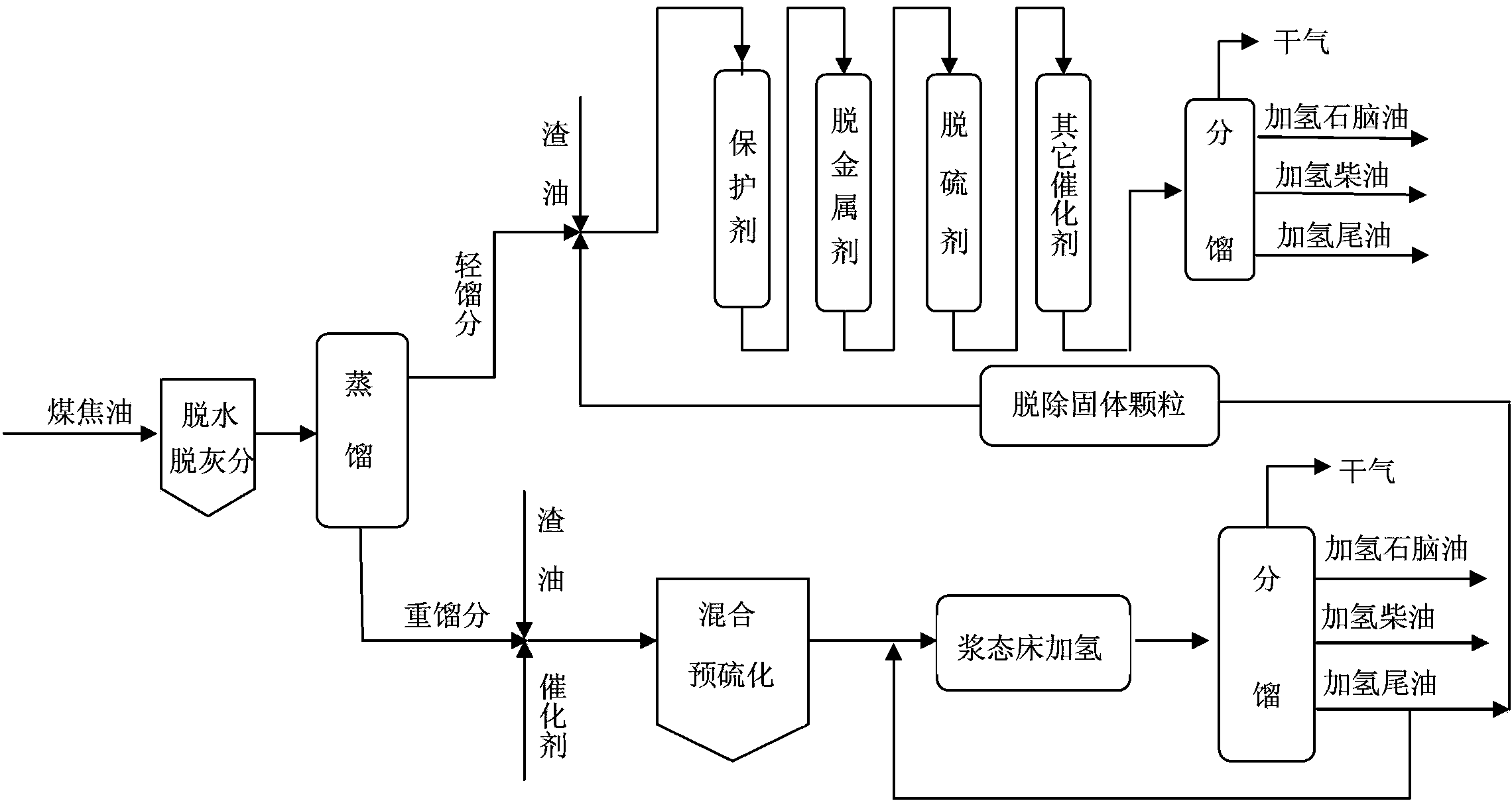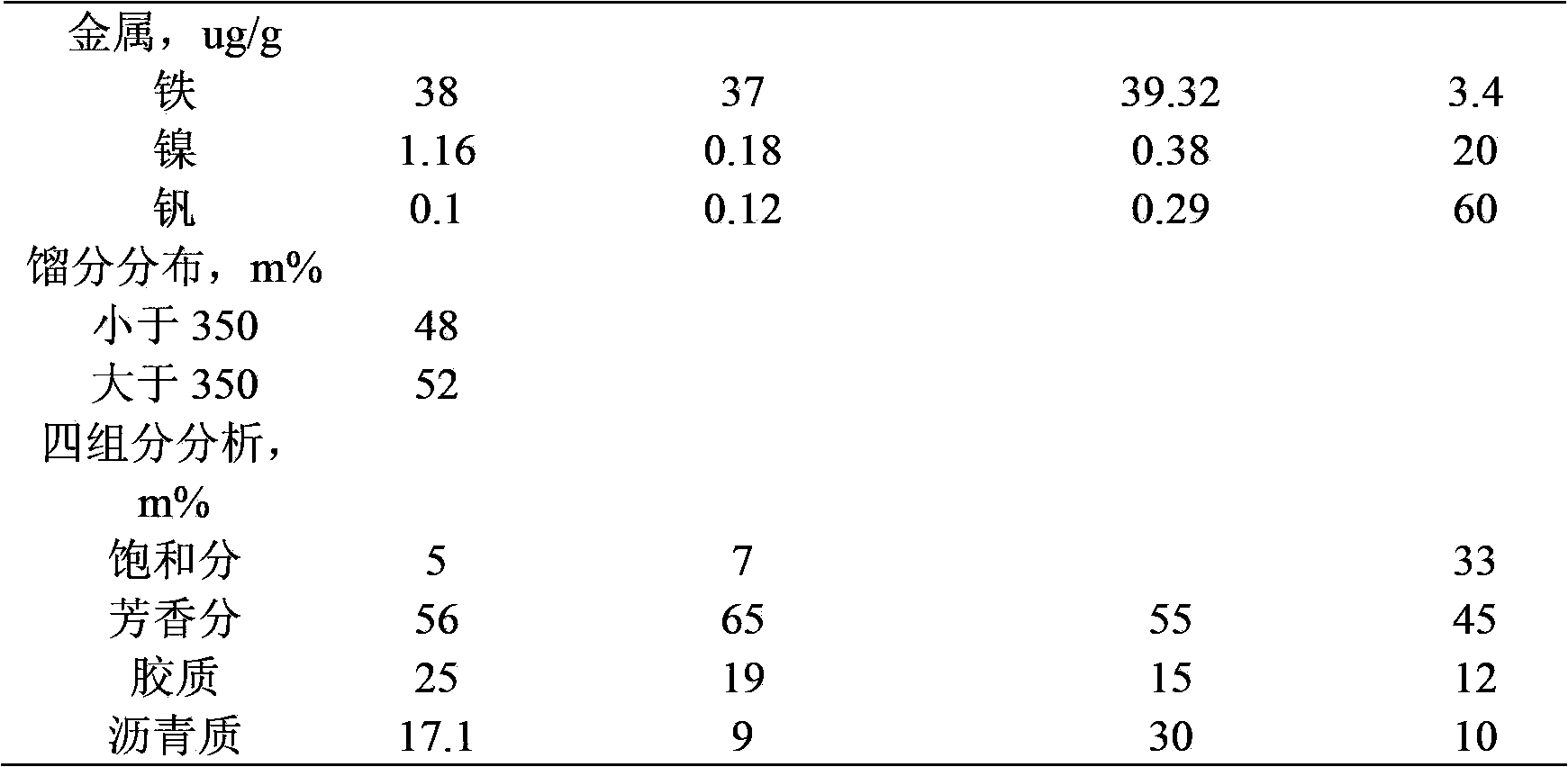Combined hydrogenation process method for treating coal tar and residual oil
A technology of coal tar and residual oil, applied in the field of combined technology
- Summary
- Abstract
- Description
- Claims
- Application Information
AI Technical Summary
Problems solved by technology
Method used
Image
Examples
Embodiment 1
[0025] In this embodiment, the combined hydrogenation process of the present invention is adopted, and the properties of coal tar, light and heavy fractions of coal tar and residual oil are shown in Table 1.
[0026] Table 1 Raw material properties
[0027]
[0028]
[0029]Coal tar distillation is divided into light coal tar fraction less than or equal to 350°C and heavy coal tar fraction greater than 350°C; the mass ratio of coal tar heavy fraction (greater than 350°C) to residual oil is 1:1, catalyst and vulcanizing agent Mix evenly, and sulfide the catalyst under the action of hydrogen. The sulfided mixed material is preheated, and then enters the slurry bed reactor for hydrocracking reaction; the product from the slurry bed reactor is subjected to fractional distillation to obtain gas, hydrogenation Naphtha, Hydrogenated Diesel and Hydrogenated Tails. The light fraction of coal tar (less than or equal to 350°C) and the residual oil with a mass ratio of 1:4 enter th...
Embodiment 2
[0031] Coal tar distillation is divided into light coal tar fraction less than or equal to 350°C and heavy coal tar fraction greater than 350°C; the mass ratio of coal tar heavy fraction (greater than 350°C) to residual oil is 1:1, catalyst and vulcanizing agent Mix evenly, and sulfide the catalyst under the action of hydrogen. The sulfided mixed material is preheated, and then enters the slurry bed reactor for hydrocracking reaction; the product from the slurry bed reactor is subjected to fractional distillation to obtain gas, hydrogenation Naphtha, hydrogenated diesel oil and hydrogenated tail oil; part of the hydrogenated tail oil is returned to the preheating equipment as circulating tail oil for recycling, and the other part is sent to the fixed bed residue hydrogenation unit. Hydrogenated tail oil, light fraction of coal tar (less than or equal to 350°C) and residual oil at a mass ratio of 1:2:4 enter the fixed-bed residual oil hydrogenation unit in the presence of hydrog...
PUM
| Property | Measurement | Unit |
|---|---|---|
| volume ratio | aaaaa | aaaaa |
Abstract
Description
Claims
Application Information
 Login to View More
Login to View More - R&D
- Intellectual Property
- Life Sciences
- Materials
- Tech Scout
- Unparalleled Data Quality
- Higher Quality Content
- 60% Fewer Hallucinations
Browse by: Latest US Patents, China's latest patents, Technical Efficacy Thesaurus, Application Domain, Technology Topic, Popular Technical Reports.
© 2025 PatSnap. All rights reserved.Legal|Privacy policy|Modern Slavery Act Transparency Statement|Sitemap|About US| Contact US: help@patsnap.com



